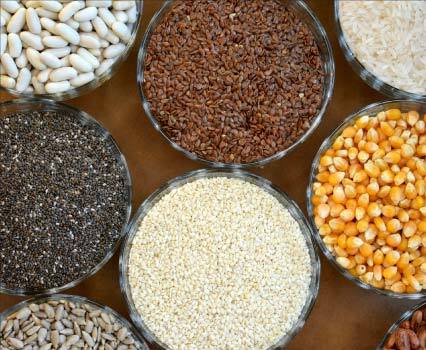Europe's Commodity Proteins Market: Fueling Growth and Innovation

The European commodity protein market is growing stronger, with a recorded volume of 5.96 million tons, and this number is expected to reach 9.15 million tons by 2030. The commodity protein market is exhibiting a strong growth trend, with a 7.2% CAGR forecasted from 2025 to 2030. These statistics suggest that customer preferences are shifting, and people are increasingly inclined to incorporate protein into their diets through various means. A rise in demand for more functional foods, supplements, and sustainable protein has been noticed in the European market. This rise in protein preference is more prominent in countries such as the United Kingdom, Germany, France, and the Netherlands, where consumers have higher disposable incomes and a more urban lifestyle, accompanied by growing awareness of personal health.
What Are Commodity Proteins & Why the Surge?
Commodity protein refers to standardized and high-volume protein ingredients, such as soy protein or fish meal, which are traded internationally for large-scale food and feed manufacturing. These protein sources are primarily considered for their nutritional content at an efficient cost rather than any other specialized characteristics. The key applications for these protein sources are in functional foods, animal feeds, pet and aquatic food, dietary supplements, and infant formulas. With increased health awareness and a growing preference for high-protein diets and sports nutrition plans, the market is experiencing significant growth in European markets. Now, a health-conscious customer doesn’t choose food based on basic preferences; instead, consumers are seeking food options that provide them with additional functional benefits for their health and overall wellness. For example, the data indicate that soy protein prices are expected to drop from $1.70/kg (2020) to $1.20/kg (2030), making it even more accessible and affordable for food producers. These changes in prices and increased preference of consumers for protein-rich food indicate a growing market for commodity protein.
Market Snapshot: Growth, Prices & Country Highlights
The European commodity protein market is now indicating an upward trend, primarily driven by demand across the food, feed, and supplement industries. Europe recorded a total of 5.96 million tons in 2020, and the protein market is expected to grow at a steady CAGR of 7.2% to reach 9.15 million tons by 2030. Considering product-wise growth, soy protein is expected to continue dominating the market, with prices forecasted to ease from $1.70/kg to $1.20/kg, which will support higher soy usage in food formulations. Fish meal prices are expected to peak mid-decade, reaching USD 1.30/kg, while poultry by-product meal is seeing modest but stable gains.
Geographically, Germany is leading the commodity protein market and is projected to reach a meat and bone meal valuation of USD 0.357 billion by 2030. This growth in Germany is followed by Spain, which is experiencing faster growth with a CAGR of 5.5%. In contrast, Poland and Romania are maintaining smaller growth rates, indicating varying levels of industrial demand across Europe.
Together, these trends highlight a market that is not only growing in scale but is also diversifying in price dynamics and regional strengths.
Challenges, Opportunities & What to Watch
While the protein commodity market in Europe is showing steady growth, it could face challenges that can hinder its future development.
• Volatile Raw Material Prices: This is a key concern in the market of soy and fish-based proteins, as their prices are affected by fluctuating crop yields and international trade dynamics.
• Supply Chain Disruptions: Disruptions in the supply chain and a rise in the cost of energy also add pressure on manufacturers.
• Regulatory Constraints: Regulations on animal by-products and increased sustainability standards continue to tighten across Europe. Manufacturers are now compelled to meet higher sustainability standards and comply with environmental compliance benchmarks, which in turn increases their manufacturing costs.
• Competition from alternative and plant-based proteins has also increased and is reshaping the market's preference.
Conclusion
The commodity protein market in Europe stands at a crucial point, where it balances growth potential with other challenges, such as sustainability and consumer preferences. The total volume is projected to increase from 5.96 million tons to 9.15 million tons (2025-2030) at a steady growth rate of 7.2% CAGR. The entire protein ecosystem is expanding in both scale and sophistication. For producers, the key to strategic adaptation lies in sourcing raw materials optimally, leveraging price efficiencies, and aligning with the continent's sustainability agenda. As Europe shifts towards more nutritionally rich, sustainable, and cost-efficient protein sources, businesses prioritizing the adoption of the latest technology and producing responsibly will be optimally positioned to grow in this evolving market.